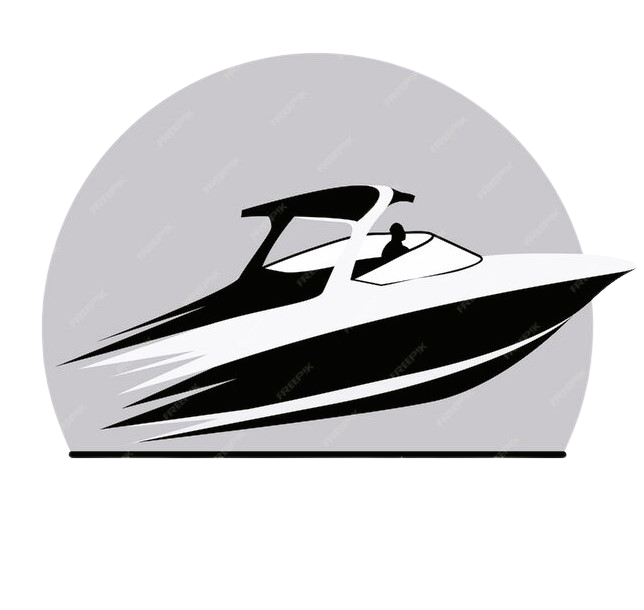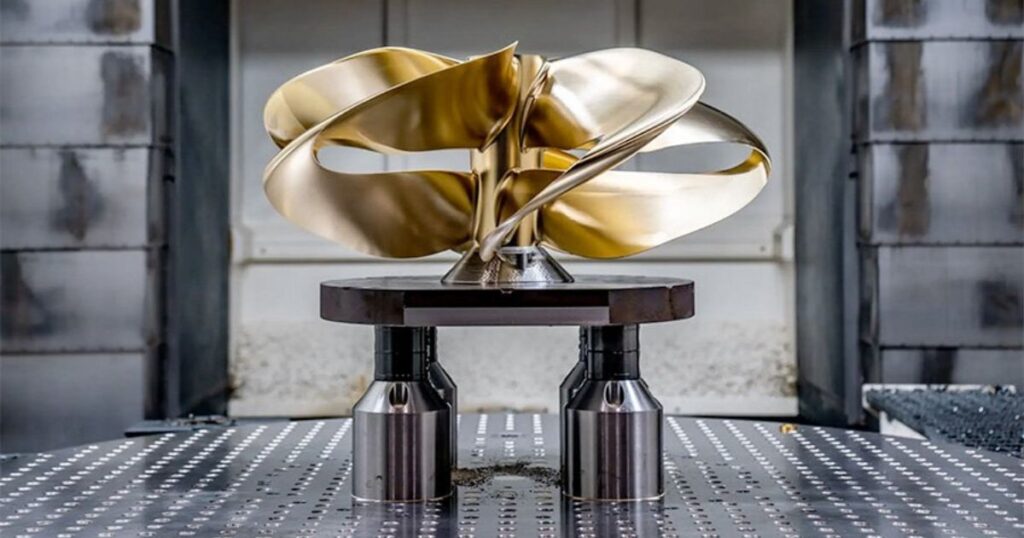Sharrow propellers, with their innovative design and unparalleled efficiency, are heralding a new era in marine performance. Unlike traditional propellers, sharrow propellers feature a unique blade configuration that maximizes thrust while minimizing drag, significantly improving propulsion efficiency and overall vessel performance. By harnessing fluid dynamics and advanced engineering principles, sharrow marine propellers offer enhanced manoeuvrability, reduced fuel consumption, and lower emissions, making them a game-changer in the maritime industry.
Their ability to operate efficiently across various speeds and conditions further underscores their versatility and practicality for marine applications. With sharrow marine stock, vessels can navigate more effectively, achieve higher speeds, and reduce their environmental footprint. In essence, sharrow marine propellers are revolutionizing marine performance by setting new standards for efficiency, sustainability, and operational excellence.
Introduction to Sharrow Propeller
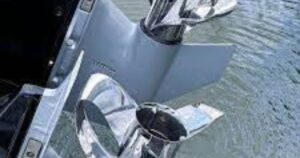
Introducing the sharrow marine stock marks a significant milestone in marine propulsion technology. Unlike conventional propellers, the boasts a distinctive design that revolutionizes efficiency and performance on the water. Its innovative blade shape and configuration are meticulously engineered to optimize thrust and minimize resistance, resulting in unparalleled propulsion capabilities. By leveraging principles of hydrodynamics and cutting-edge engineering, offer many benefits, including increased manoeuvrability, reduced fuel consumption, and quieter operation. This groundbreaking propulsion solution garners attention across the maritime industry for its potential to enhance vessel performance while reducing environmental impact. As marine operators seek more efficient and sustainable propulsion options, the emergence of sharrow marine stock represents a promising step forward in meeting these demands. Introducing sharrow propellers heralds a new era in marine propulsion, setting the stage for improved efficiency, sustainability, and overall operational excellence on the water.
History of Propellers
The history of propellers is a fascinating journey through the evolution of marine propulsion. For centuries, propeller technology has undergone continuous refinement and innovation to meet the demands of maritime exploration and industry demands. Early propeller designs were rudimentary, often resembling simple screw-like mechanisms. However, as the need for more efficient and powerful propulsion systems grew, so did the sophistication of propeller designs.
The 19th and 20th centuries saw significant advancements in propeller technology, driven by pioneers such as John Ericsson and Francis Pettit Smith. These innovators experimented with various blade shapes, materials, and configurations, developing more effective propeller designs to Choosing the Right Surface Drive Mud Motor.
Milestones such as the introduction of the screw propeller and the transition from wooden to metal propellers marked key moments in propeller history. These advancements revolutionized maritime transportation, enabling faster speeds, greater efficiency, and improved manoeuvrability for ships of all sizes.
Propeller technology continues to evolve today, with modern designs incorporating cutting-edge materials and computational fluid dynamics to optimize performance. From small recreational boats to massive ocean-going vessels, propellers remain vital to marine propulsion, shaping maritime history and innovation.
How do sharrow propellers work?
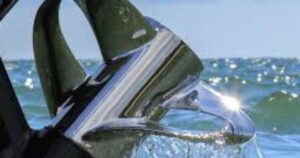
Sharrow propellers work on the hydrodynamics principle to maximize thrust and minimize resistance in water. Unlike traditional propellers, which feature uniform blade shapes and configurations, sharrow marine props have a unique design characterized by a twisted blade shape and a central void.
The twisted blade shape of carefully engineered to optimize water flow around the blades, reducing drag and increasing propulsion efficiency. This design allows to generate more thrust with less input power than conventional propellers.
Additionally, the central void in further reduces resistance by allowing water to flow more smoothly through the propeller. This innovative feature helps to minimize turbulence and improve overall hydrodynamic performance.
Overall, leverage advanced engineering principles to enhance propulsion efficiency and performance, making them a promising solution for many marine applications.
Advantages of Sharrow Propellers
sharrow marine props offer many advantages over traditional propeller designs, making them a preferred choice for marine applications. Some of the key benefits include:
- Increased Efficiency: Sharrow propellers are meticulously engineered to maximize thrust and minimize drag, resulting in significantly higher propulsion efficiency than conventional propellers. This increased efficiency translates to reduced fuel consumption and lower operating costs for vessel operators.
- Reduced Noise and Vibration: The unique blade configuration of sharrow propeller bravo 3 helps to minimize noise and vibration levels during operation. This enhances onboard comfort for passengers and crew and reduces vessel noise’s impact on marine ecosystems.
- Environmental Benefits: By improving propulsion efficiency and reducing fuel consumption, contribute to lower emissions and a smaller ecological footprint. This aligns with the growing emphasis on sustainability in the maritime industry and helps mitigate marine vessels’ environmental impact.
- Versatility: The versatile and adaptable to various types of watercraft, including recreational boats, commercial vessels, and naval ships. Their ability to perform efficiently across various speeds and operating conditions makes them suitable for diverse marine applications.
Overall, sharrow propeller for mercury’ advantages make them an attractive option for marine operators seeking to improve performance, reduce costs, and minimize environmental impact.
Applications of Sharrow Propellers
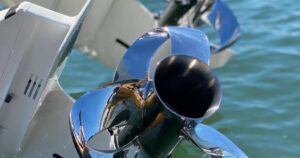
Sharrow propellers are finding extensive applications across the maritime industry, offering enhanced efficiency and performance for various types of watercraft. From recreational boats to commercial vessels and naval ships, are revolutionizing marine propulsion. Their versatility allows them to power various vessels, including yachts, sailboats, cargo ships, and military craft. In commercial shipping, are prized for reducing fuel consumption and emissions, contributing to cost savings and environmental sustainability.
Similarly, in naval applications, improve agility and manoeuvrability, enhancing the operational capabilities of naval fleets. Recreational boaters also benefit from sharrow propellers, enjoying improved performance and reduced operating costs for fishing, watersports, and leisure cruising. With their diverse applications and performance advantages, are poised to shape the future of marine propulsion across various sectors.
Comparing Sharrow Props with Traditional Designs
Several key differences and advantages emerge when comparing sharrow mx propeller with traditional designs.
Firstly, sharrow props feature a unique twisted blade design, optimized to reduce drag and improve hydrodynamic efficiency. In contrast, traditional propellers typically have uniform blade shapes, which may result in higher levels of resistance and lower overall efficiency.
Also, propellers often exhibit superior performance across various operating conditions. Their innovative design allows for increased thrust generation at lower speeds, enhancing manoeuvrability and responsiveness compared to traditional designs.
Moreover, sharrow propellers have been shown to produce less noise & vibration during operation, contributing to a smoother and more comfortable boating experience. This is particularly beneficial for recreational boaters and passengers seeking quieter and more enjoyable outings on the water.
Overall, while traditional propeller designs have served marine propulsion needs for decades, sharrow propeller for mercury offer a compelling alternative with significant efficiency, performance, and comfort advantages. As technology continues to evolve, sharrow mx propeller are poised to become increasingly prevalent in the marine industry, reshaping the standards for propulsion excellence.
Installation and Maintenance
Installation and maintenance procedures are crucial aspects of ensuring optimal performance and longevity of tipless propeller.
During installation, meticulous attention to detail is essential to ensure proper alignment & attachment of the propeller to the vessel’s propulsion system. This typically involves following manufacturer guidelines and recommendations, including torque specifications for fasteners and alignment checks to ensure proper shaft alignment.
Additionally, inspecting the propeller and surrounding components It’s crucial to check for wear or damage before installing. This helps identify & address any potential issues affecting performance or safety.
Regular maintenance is also essential to keep sharrow propellers operating at peak efficiency. This includes routine inspections to check for wear, corrosion, or damage and cleaning to remove any fouling or debris that may accumulate on the propeller blades.
Periodic maintenance tasks may also include lubricating bearings or other moving parts and balancing to ensure smooth and vibration-free operation.
By following proper installation and maintenance procedures, marine Operators can optimize the longevity and performance of sharrow propellers, ensuring reliable and efficient propulsion for their vessels.
Future of Propulsion Technology
The future of propulsion technology holds exciting prospects for the maritime industry. Advances in propulsion systems are poised to drive innovation and sustainability. how much is a sharrow propeller are expected to play a significant role in shaping this future landscape.
One key trend in propulsion technology is the continued development of eco-friendly and sustainable propulsion solutions. As environmental concerns and regulations become increasingly stringent, there is a growing demand for propulsion systems that minimize emissions and ecological impact. Sharrow propellers, with their ability to improve fuel efficiency and reduce emissions, are well-positioned to meet this demand.
Another trend is integrating advanced materials and manufacturing techniques to enhance propeller performance and durability. By leveraging lightweight yet robust materials and innovative manufacturing processes, future propeller designs can achieve higher efficiency, reliability, and longevity.
Additionally, adopting digital technologies such as predictive analytics and machine learning is expected to revolutionize propulsion system optimization and maintenance. By analyzing vast amounts of data in real time, operators can identify potential issues early, optimize performance, and reduce downtime.
Overall, the future of propulsion technology promises to be characterized by increased efficiency, sustainability, and technological innovation. how much is a sharrow propeller are poised to be at the forefront of this evolution, driving advancements that will shape the future of marine propulsion for years to come.
Conclusion
Sharrow propellers represent a significant advancement in marine propulsion technology, offering many benefits, including increased efficiency, reduced noise and vibration, and environmental sustainability. Their innovative design & superior performance make them a compelling choice for marine applications, from recreational boating to commercial shipping and naval operations.
As the maritime industry continues to evolve, sharrow propellers are poised to play a pivotal role in driving efficiency, sustainability, and operational excellence. With ongoing research and development efforts focused on further optimizing performance and durability, are expected to continue shaping the future of marine propulsion.
By harnessing the power of advanced engineering principles and cutting-edge materials, are paving the way for a more efficient, environmentally friendly, and technologically advanced maritime sector. In essence, sharrow propellers represent not just a technological innovation but a pathway towards a more sustainable and prosperous future for the marine industry.
FAQ:
Are sharrow propellers suitable for all types of watercraft?
Sharrow propellers are adaptable to various watercraft, ranging ranging from little recreational boats to substantial business ships.
How do sharrow propellers contribute to environmental sustainability?
By improving propulsion efficiency and reducing fuel consumption, sharrow propellers help minimize carbon emissions and ecological footprint.
Can existing vessels be retrofitted with sharrow propellers?
Yes, many existing vessels can undergo retrofitting to accommodate sharrow propellers, offering a cost-effective way to enhance performance and efficiency.
What factors should be considered when selecting a sharrow propeller?
Factors such as vessel size, operating conditions, and intended usage are crucial in determining the most suitable sharrow propeller for a specific application.
Are sharrow propellers compatible with alternative propulsion systems?
Sharrow propellers can complement other propulsion systems, offering enhanced efficiency and performance when used with hybrid or electric propulsion setups.
